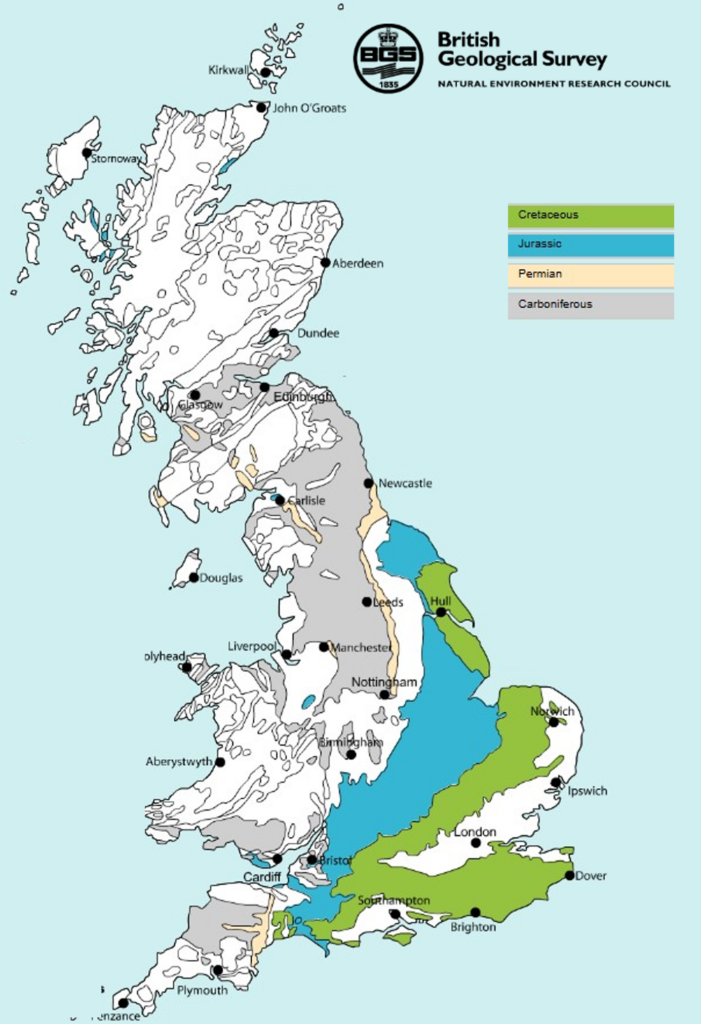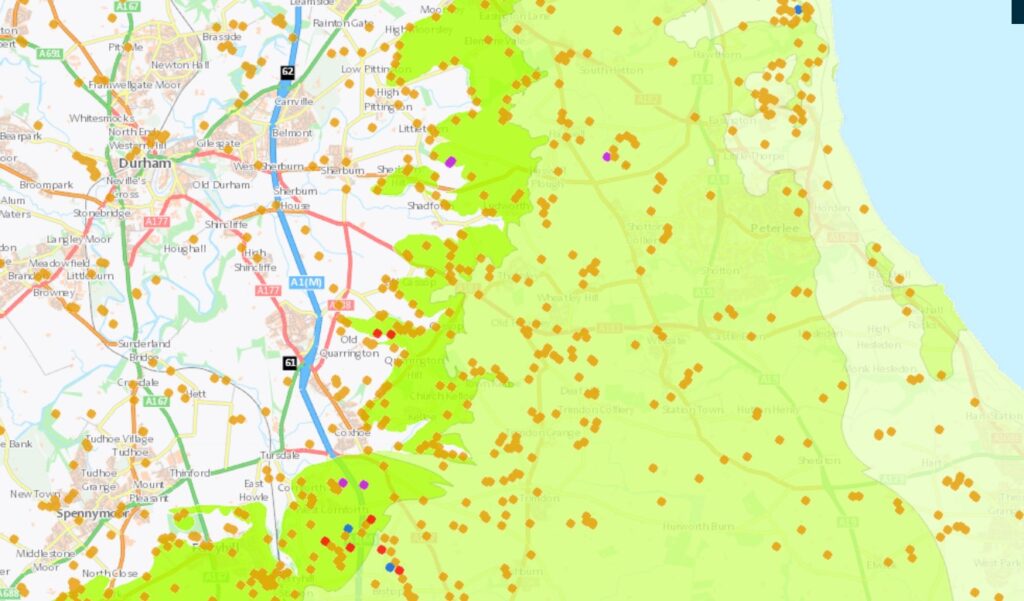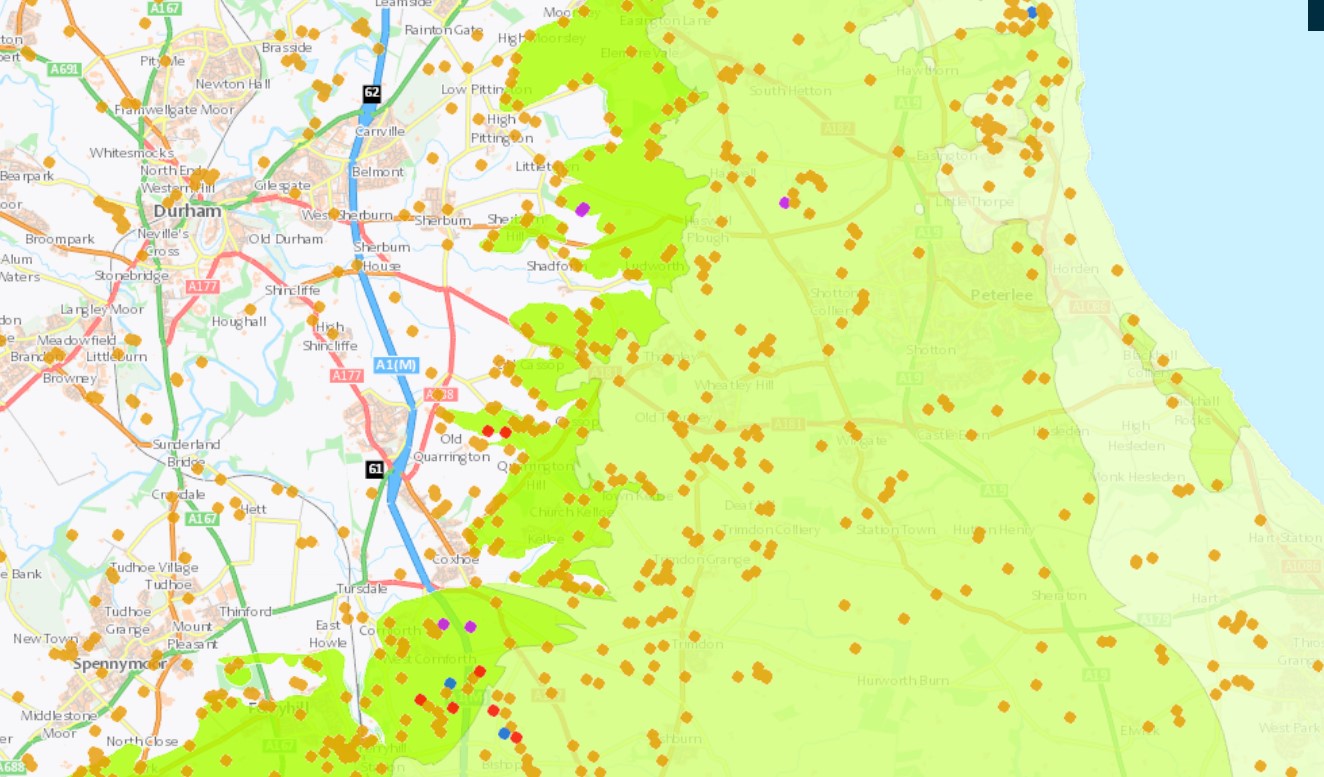In our previous article, we looked at chalk mining and where it occurred. We now focus on limestone, a ‘close relative’ of chalk and the other primary calcitic rocks found in the UK.
Limestone forms in a similar depositional setting to chalk, namely warm shallow marine environments rich in calciferous organic matter ranging in size from microscopic foraminifera to larger macroscopic crustaceans and molluscs. These settle out on the sea floor along with additional calcium carbonate (CaCO3) that precipitates out from the water. Over time, these sediments compact and further solidify, frequently preserving fossils visible at both macroscopic and microscopic levels.
Limestone is an essential product in various sectors, including construction, agriculture and industrial processing. Limestone is used as flux in metal smelting, such as iron and copper, and as a raw material for producing lime to treat acidic soils and purify water. Lime is also an essential ingredient in chemical industries due to its alkaline properties. However, limestone is perhaps best known for its use as a building stone and was used in the construction of the pyramids in Egypt, cathedrals, castles and churches in the Middle Ages, commercial buildings such as banks and railway stations and residential buildings where abundant, such as the famous Cotswold and Bath Stones.
Limestone Geology and Key Mining Regions
There were four major periods in the geological history of the UK in which significant limestone deposits formed. These were:
- Carboniferous Limestone Series (360-325 million years ago): One of the largest and most abundant rock series in the UK, appearing extensively in the Peak District, the Pennines, South Wales, the Mendips and the Midland Valley of Scotland.
- Late Permian dolomitic limestones (270-250 ma): Forming a near continuous band of rock (and associated escarpments) stretching southwards from Hartlepool and South Shields, through County Durham, Yorkshire and Nottinghamshire.

All data courtesy of the British Geological Survey. British Geological Survey materials © UKRI 2024
- Jurassic Limestones (200-145ma): forming a near continuous band of rock stretching NE-SW from the Yorkshire coast down to the Devon coast, including Lincolnshire and the Cotswolds.
- Upper Cretaceous Limestone (100-66ma): found in close proximity to the chalk deposits across the south of England and East Anglia.
In addition, there are several older outcrops of limestone in Britain’s geological record including:
- Late Precambrian rocks in the central highlands of Scotland (now metamorphosed into marble).
- Silurian limestone in the Welsh borders and West Midlands.
- Devonian limestone (unsurprisingly found in Devon!).
Limestone Mining Methods
The abundance of limestone across the county and its typical outcrop pattern, including escarpments, means that surface quarrying is the most common form of extracting limestone from the earth.
Underground mining of limestone is rare, but it has been used specifically where there is a need for high-purity limestone or where there are constraints to surface mining. Most notably, underground limestone mining has taken place in Dudley and the Mendips. Where underground methods are used for the extraction of limestone, these typically comprise pillar, stall, and adit mining, although in Dudley, longwall mining has been recorded.
There are still over 300 active limestone mining operations located in twelve regions across the UK.

Limestone occurrence (green) and mine locations around Durham in NE England. Brown markers indicate historic mining activity and red markers active locations. All data courtesy of the British Geological Survey. British Geological Survey materials © UKRI 2024
Remnant Hazards and the Risks to Landowners and Developers
The risks posed by historic limestone mining are similar to those discussed for the other resources earlier in this series. These include:
- Land Subsidence: The collapse of old mine workings and entries can cause ground subsidence, damaging buildings and infrastructure.
- Land Settlement: Where developments are proposed over former opencast sites which have been backfilled, there can be issues associated with settlement of buildings and infrastructure, especially if they are built over the high wall.
- Environmental: Most environmental impacts from limestone mining occur during active extraction. However, the risks to developers and landowners occur in the form of sediment and contaminants runoff into water bodies. Fill materials used to restore old quarries can also be sources of contamination and ground gases, which may affect the end users.
GRM have extensive experience and expertise working with landowners and developers to help identify historic mine workings and mitigate risk. If you have any development or construction projects that may be impacted by historical mining workings and hazards, then please get in touch to find out how we can help save both time and costs. Please use your main point of contact at GRM or for new enquiries email richard.upton@grm-uk.com or call 01283 551249.


